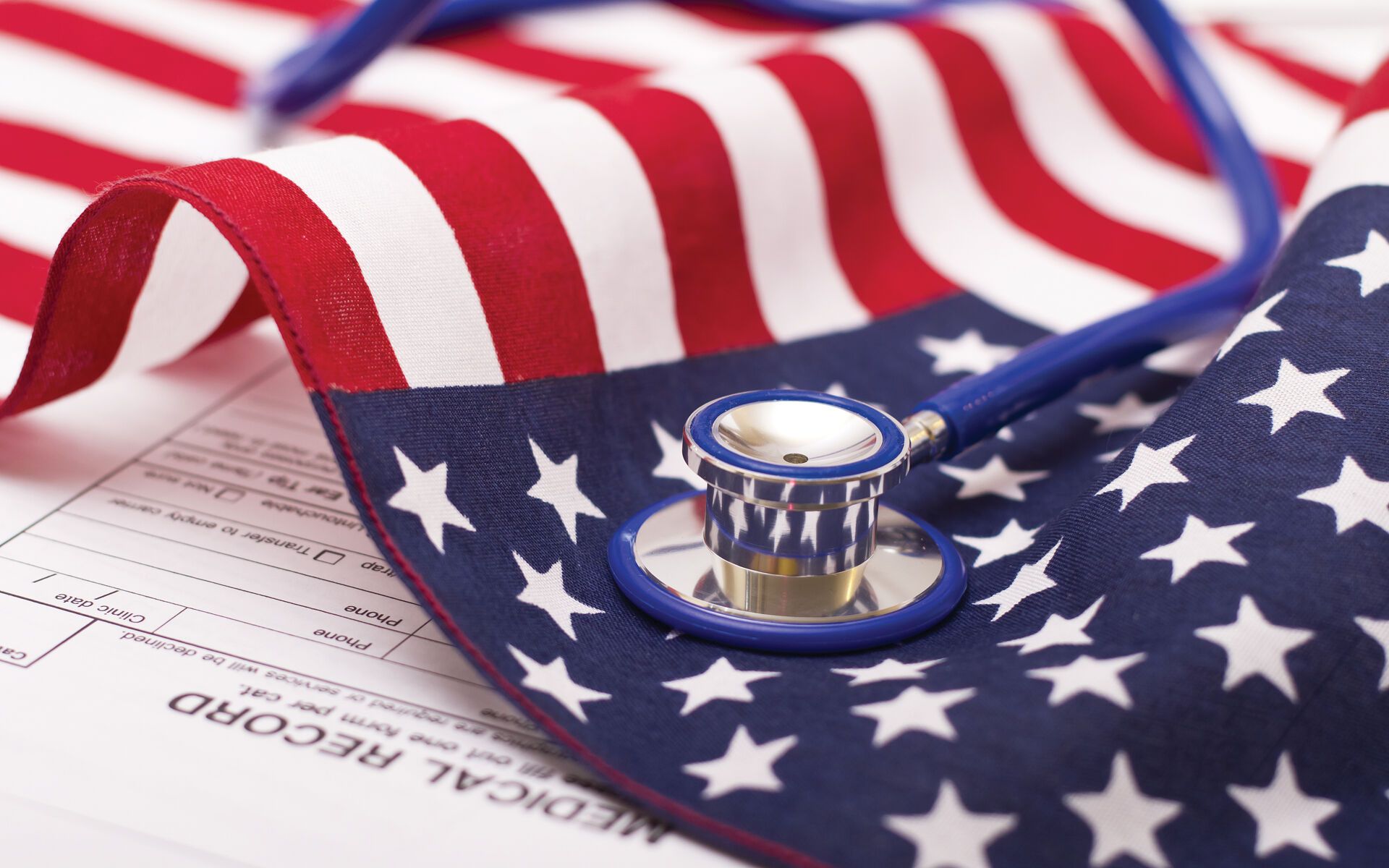Improving American Healthcare

In This Article
-
“Medical education is the process for training doctors, subordinate to the dominant economic and social structures in societies in which it takes place.”
-
Without considering such inequalities and offering bottom-up solutions to these issues, our healthcare system is likely to remain dominated by people who have difficulty empathizing with a socioeconomically diverse patient population.
-
Thanks to various social media platforms, these apparent issues are being discussed among healthcare professionals more than ever.
“Medical education is the process for training doctors, subordinate to the dominant economic and social structures in societies in which it takes place.” [1]
Over the last decades, we have witnessed increasing income inequality. The US is no exception. The discrepancy between upper-income and low-income households has been on the rise [2]. This, of course, manifests itself in medical education, making it accessible to only a fraction of society. Approximately 50% of medical students come from families whose incomes are in the top quintile, and 80% come from the top two quintiles. Yet, these doctors are expected to empathize with patients from lower socioeconomic status (SES) and understand the difficulties a patient must overcome before being able to step foot in a doctor’s office [3,4]. They must be able to recognize the obstacles a patient has overcome, whether that be losing money from missing work or spending hours on a bus to be seen for merely 10 minutes. Imagine going through all this trouble, only to be judged for having low medical literacy or not speaking a specific language, and then being sent home feeling your problem is unresolved. The fact that many experience this for a medication they may not be able to afford ensues further distrust in the medical establishment.
The structural issues mentioned above are present in every aspect of our healthcare system. In medicine, fee-for-service—being paid for each office visit, procedure, CT scan, etc.—is how doctors are paid. This draws a strong parallel to how medical school applicants are selected. How many hours did you volunteer, how many leadership positions did you hold, and how many test questions did you get right? Subjective measures of a student’s potential, resilience, and grit, such as if they had to support a family during the process or had to make tough decisions such as picking between MCAT test prep materials and groceries, hold little to no weight depending on the institution. Without considering such inequalities and offering bottom-up solutions to these issues, our healthcare system is likely to remain dominated by people who have difficulty empathizing with a socioeconomically diverse patient population.
Our healthcare system, however, isn’t broken—at least for some people. The structural issues work quite well for those who built the system to benefit from it. We have a very profitable “disease care system,” according to Escape Fire: The Fight to Rescue American Healthcare, a documentary that analyzes the American healthcare system and some of its underlying issues: “It doesn’t want you to die, and it doesn’t want you to get well. It just wants you to keep coming back” [5]. What incentive does a person from the top quintile have to change a system that has benefited them their entire lives? A UK study illustrated a direct association between medical student SES, academic ability, and specialty choice [6].
As noted in Escape Fire, specialized physicians are given more seats at the table than primary care physicians in health policy matters because they fund pharmaceutical and high-tech companies with the nature of how they practice medicine—reinforcing a “disease care system” [4]. Medical schools that do not prioritize socioeconomic diversity in their incoming classes will train a workforce that will likely remain complacent in a healthcare system that benefits a handful of people. It is important to note, however, that this complacency does not necessarily come from a place of ill intention—after all, we all promise to, “first, do no harm” [7]. Like the phrase, “ignorance is bliss,” when we are not exposed to something, it is less likely to be on our radar. We are less likely to even perceive issues if we are not affected by them. Integrating curriculums focused on emotional and social intelligence alongside efforts to increase diversity will no doubt spark conversation and dialogue surrounding these issues, leading to new and innovative solutions.
Thanks to various social media platforms, these apparent issues are being discussed among healthcare professionals more than ever. For instance, #medtok—the medical side of the social media app TikTok—has become a platform for such discussions. A user called @pathdoctormd asks, “When did u first realize ur friends in med school came from families that were way richer than yours?” and answers, “when a group of my friends in medical school were planning a trip to Europe during our one week of vacation for spring break”[8]. The comments include answers as well: “I only applied to the medical schools my family donated to” (@dmccooey4); “When I heard about their private jets … two different individuals had grandfathers who OWNED entire med schools. Legacies are a diff breed” (@neebsz); “My boy is in medical school and tells me similar stories. He lives on lentils and they thought he was a cool vegan … No, we are just poor” (@distractedpainter).
I had a similar experience after learning a classmate’s father had sponsored our whitecoat ceremony, and other parents sponsored rooms and various parts of the new medical school building. Even one of my classmates posted a TikTok explaining her medical school acceptance story, lacking support from advisors and applying to only six schools due to cost [9]. On October 16, 2021, @drglaucomflecken posted a video criticizing the greed of the Association of American Medical Colleges (AAMC) in the Electronic Residency Application Service (ERAS) process—again supporting how those from higher SES backgrounds may be more likely to match into more competitive specialties, getting more seats at the health policy table that will determine what the future of American healthcare will look like [10].
From the collective experiences shared in the previous paragraph, it is challenging to believe peers from higher SES can genuinely empathize with future patients—who will be strangers—when they already struggle to empathize with their medical school peers. Greater exposure to classmates from various SES is a crucial way to combat this. An unspoken power dynamic may even exist between higher SES and lower SES students, and lower SES students may not be comfortable sharing their backgrounds. Not only is increasing admissions in this population necessary but creating space for them and their stories is also non-negotiable if we’re to truly promote dialogue among peers.
Research shows “diversity among providers leads to better patient outcomes, greater attention to cultural issues in the treatment process, reductions in disparities in health outcomes and access, innovation in thought and practice, and increased satisfaction among patients” [11, 12]. Many argue that this gap is closing; however, in fact, it is actually widening for some groups. For example, low-SES are underrepresented in medicine [13, 14]. Pipeline programs and holistic criteria in the application process are missing the mark if medicine is not diversifying: “It seems impracticable that, Dr. Nakae posits, qualified potential trainees should spend thousands more dollars and hours to recuperate a few tenths of a point in their grade point averages before applying. Do the additional classes they take make them better doctors? Do they make a difference, or only deter and delay applicants?” [12].
There is a national call for more physicians, and studies have shown there is no evidence that higher MCAT scores or GPAs predict better doctors. They predict approximately 50% variance in performance in the first two years of medical school. This is one of the least considered elements of residency program applications, yet the most important factor in a medical school application [15, 16, 17].
In Escape Fire, Dr. Ornish says, “We change medical practice, we change medical education” [4]. I would add that we must also change the medical school application process, making it more accessible and affordable. This will, in turn, create a more accessible healthcare system. Consequently, a healthier society will decrease the financial burden on the state, thus making room for improving other aspects of people’s lives. Dialogue—making spaces to have discussions where these voices and concerns are heard—is the first step to developing simple yet innovative solutions to this complex issue.
I would humbly like to conclude by proposing some potential solutions:
1) Preventing the “Leaky Pipeline” phenomena, which is defined as an “early decline in interest in premedical studies among underrepresented minority undergraduate students.”
- Increasing high school programs in low-income areas to motivate students to prepare for college;
- Collaborating on grassroots efforts to fund students who are accepted into college;
- Organizing coaching and mentorship programs to continue to support and motivate students through the difficulties of college and medical school admissions. (One example of such an organization is The UpLIFT (Under-represented, Low Income and First-Time students) Project.) [18]
2) Increasing funding and support through government grants.
- Advocating for increased educational opportunities at the high school, college, and medical school levels by writing letters to Congresspeople and attending town halls in local communities.
3) Increasing transparency and accountability of medical schools and the AAMC.
- Requiring more detailed public disclosure of applicant and matriculant data in medical school and residency programs;
- Not only focusing on recruitment but also retention activities to improve access.
4) Increasing ease of access to support and resources within the medical education system.
- Funding free healthcare for students within institutions;
- Funding a variety of free mental health resources within institutions;
- Increasing spaces for discussion of topics around diversity.
5) Integrating emotional and social intelligence education in medical education curriculums.
- Allocating time within existing curriculums to train and practice emotional and social intelligence skills;
- Initiating conversations regarding cost in didactic lectures as well as clinical opportunities.
References
- Garcia JC. Características generales de la educación médica en la América Latina [General characteristics of medical education in Latin America]. Educ Med Salud. 1969;3(4):267-316.
- Horowitz, Juliana Menasce, Ruth Igielnik, and Rakesh Kochhar. “Trends in U.S. Income and Wealth Inequality.” Pew Research Center's Social & Demographic Trends Project. Pew Research Center, August 17, 2020. https://www.pewresearch.org/social-trends/2020/01/09/trends-in-income-and-wealth-inequality/.
- Chun LY, Lee WW. “What do your parents do?”- A very informative question. Aamc.org. Accessed October 17, 2021. https://students-residents.aamc.org/medical-student-well-being/what-do-your-parents-do-very-informative-question
- Rafi AG. Secondary Medical School Applications Place an Unfair Financial Burden on Middle- and Lower-Income Applicants. Acad Med. 2017;92(6):728.
- Matthew, Heineman et al. 2013. Escape Fire: The Fight to Rescue American Healthcare. Santa Monica, Calif.: Lionsgate.
- Kumwenda B, Cleland J, Prescott G, Walker K, Johnston P. Relationship between sociodemographic factors and specialty destination of UK trainee doctors: a national cohort study. BMJ Open. 2019;9(3):e026961. Published 2019 Mar 27. doi:10.1136/bmjopen-2018-026961
- Edelstein, Ludwig. The Hippocratic Oath: Text, Translation and Interpretation. Baltimore: The Johns Hopkins Press, 1943.
- https://vm.tiktok.com/ZM8YhLsBS/
- it only takes one. https://vm.tiktok.com/ZM8Yh4ShM/
- https://vm.tiktok.com/ZM8jG1tA3/
- Institute of Medicine (US) Committee on Understanding and Eliminating Racial and Ethnic Disparities in Health Care, Smedley BD, Stith AY, Nelson AR, eds. Unequal Treatment: Confronting Racial and Ethnic Disparities in Health Care. Washington (DC): National Academies Press (US); 2003.
- Nakae S. The Backgrounds and Outcomes of Allopathic Medical School Applicants: Exploring Stratification and Inequality. Published online 2014. https://ecommons.luc.edu/cgi/viewcontent.cgi?article=2293&context=luc_diss
- Le HH. The socioeconomic diversity gap in medical education. Acad Med. 2017;92(8):1071.
- Morris DB, Gruppuso PA, McGee HA, Murillo AL, Grover A, Adashi EY. Diversity of the national medical student body - four decades of inequities. N Engl J Med. 2021;384(17):1661-1668.
- Donnon T, Paolucci EO, Violato C. The predictive validity of the MCAT for medical school performance and medical board licensing examinations: A meta-analysis of the published research. Acad Med. 2007;82(1):100-106.
- Julian ER. Validity of the Medical College Admission Test for predicting medical school performance. Acad Med. 2005;80(10):910-917.
- Green M, Jones P, Thomas JX Jr. Selection criteria for residency: Results of a national program directors survey. Acad Med. 2009;84(3):362-367.
- https://uplift.guide/
Ceyda Sablak is a resident pediatrician at Tripler Army Medical Center








